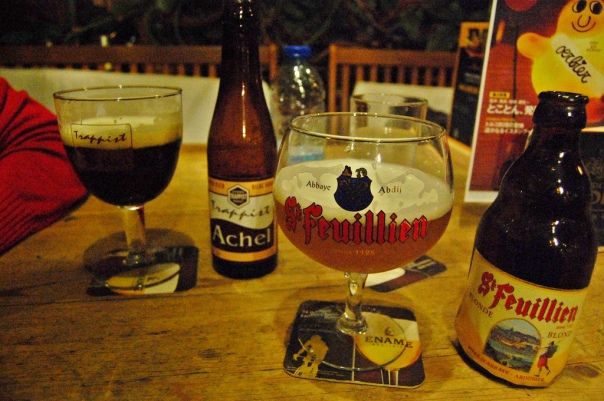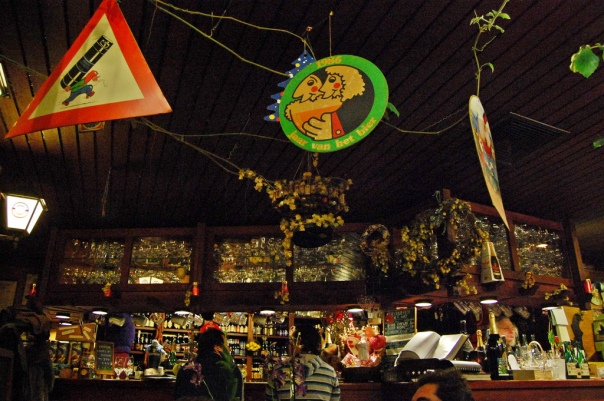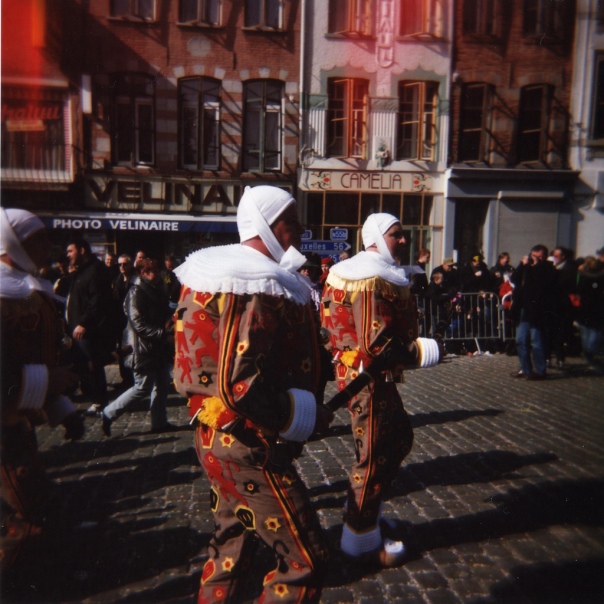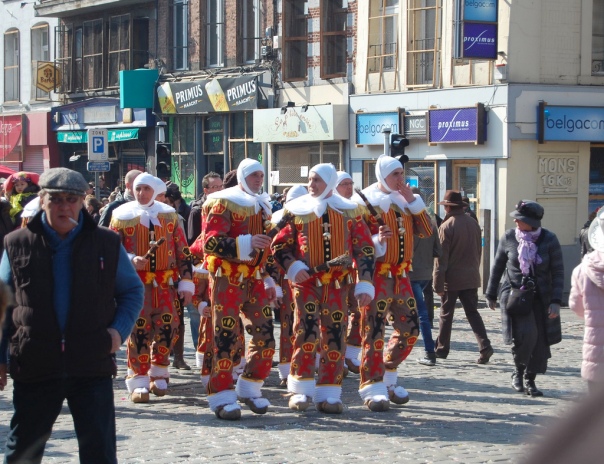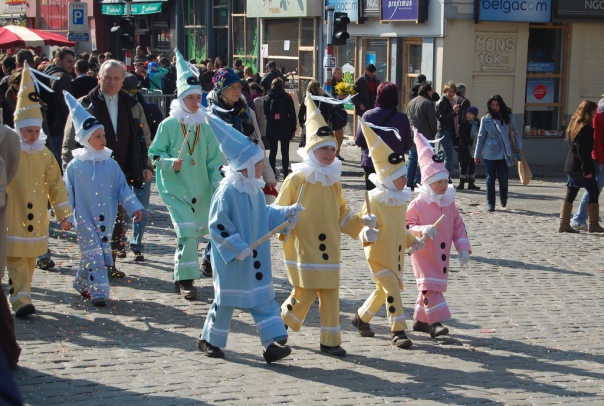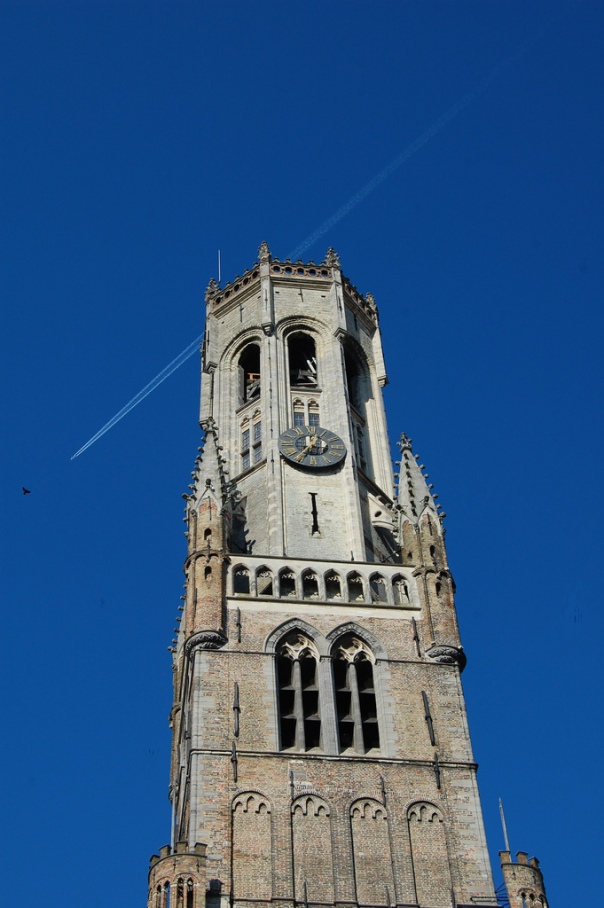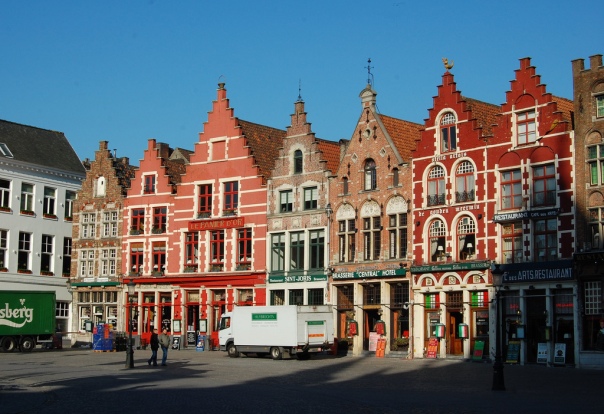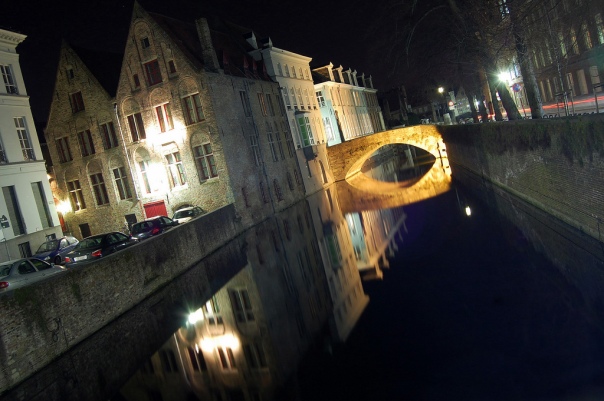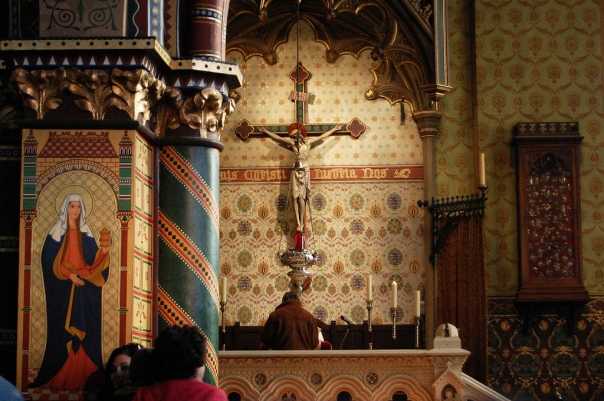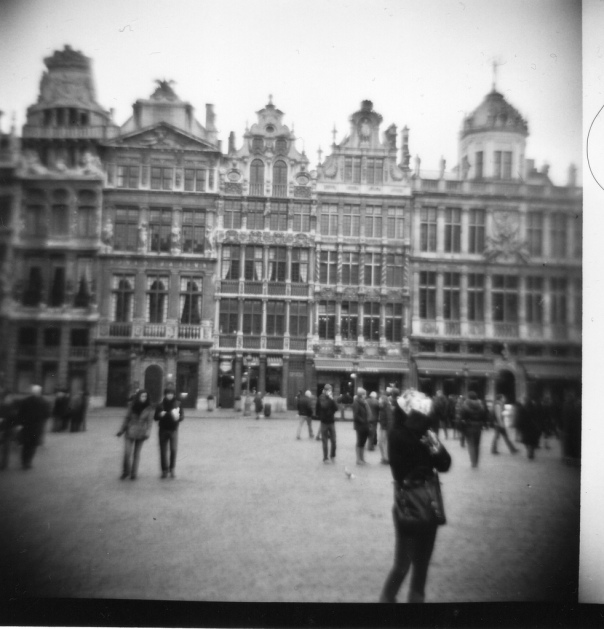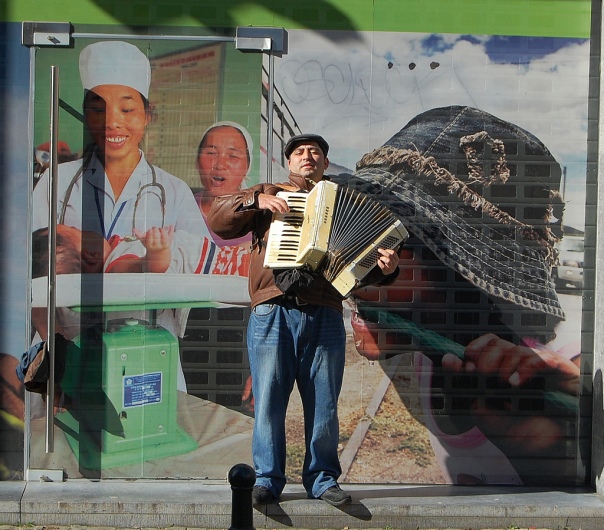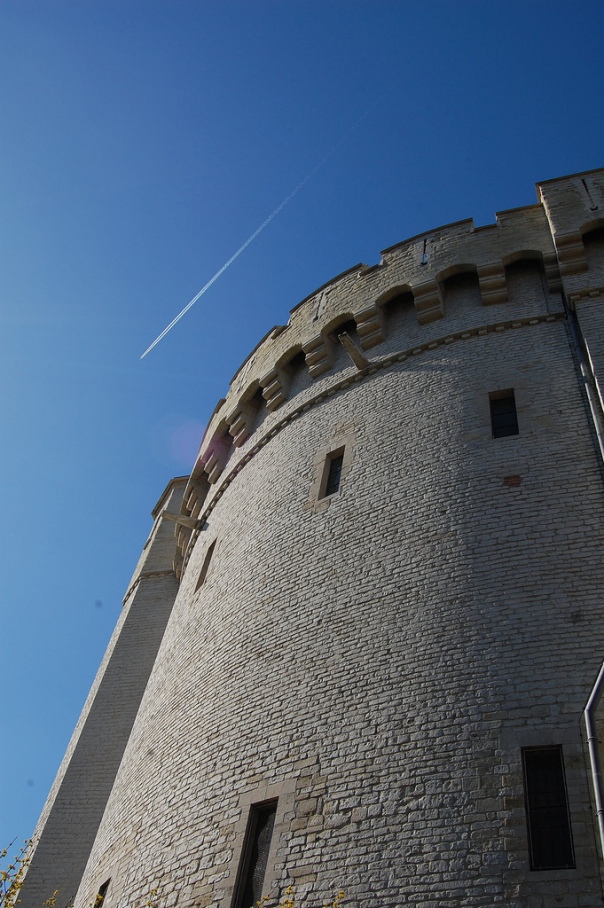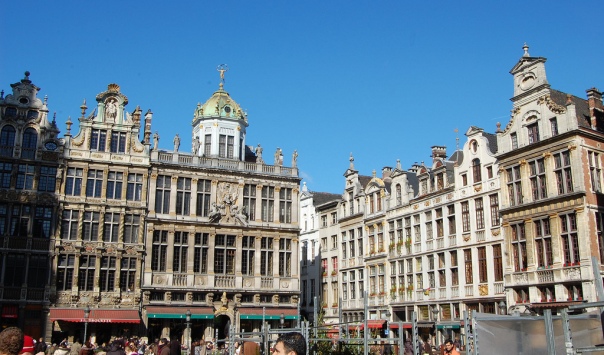Category Archives: Belgium
A Brief History of Antwerp
Last month I posted about Kulminator, a legendary Antwerp beer spot. Here’s some history on a fantastic city:
Antwerp is a most cosmopolitan city. There seems to be a certain indescribable ennui throughout much of Belgium- but not in Antwerp. There is a causal sophistication here. Unlike Bruges, which is stuck in time, and Brussels which seems to have lost its identity in its role on the international stage, Antwerp is vibrating through another golden age.
The area has been settled at least since the Roman era, but really rose to prominence in the 1500’s after the Zwin River silted up and Bruges’ economy collapsed. If Bruges was an incredibly prosperous port whose realm of trade stretched throughout medieval Europe and the Levant, Antwerp was a port of intercontinental scale- one of the first such ports in the world. As part of the Spanish Empire, it brought in goods from as far as the Americas and Asia. Some sources say that in the early 1500’s, Antwerp saw up to 40 percent of global trade, and was one of the largest cities in Europe.
This, of course, is where the city’s cosmopolitanism originated. Merchants from across Europe set up shop in Antwerp, and the spirit of tolerance inherent in most port cities attracted a large population of orthodox Jews. And, as always, wealth attracted the arts, including some of the most prominent painters and musicians of the Northern Renaissance.
Despite this boom period, there was a great underlying tension rising. The Low Countries became swept up by the Protestant Reformation and by a growing resentment of Spanish rule. Violence erupted in 1566, with the Iconoclastic Fury, in which Protestants ransacked towns and churches, destroying Catholic icons. A reason why many Medieval churches in Belgium have interiors adorned in the style of the Renaissance and the Baroque is that so many of the items made before 1566 were lost. The fiercely Catholic Spanish came down hard, and thus began the Eighty Years’ War which resulted in the independence of the Netherlands.
As a city at the heart of the Dutch Revolt, Antwerp suffered mightily. In November of 1576, Spanish troops sacked the city, plundering property and killing 6,000 residents – an event which became known the “Spanish Fury”. In 1585, Spain took full control of Antwerp and expelled the Protestants to the north. The population was reduced by half, and Amsterdam became the new center of international trade.
After this, the city fell into a long period of decline and was revived only in the early 19th century, when Napoleon invested in upgrading the long-neglected port (which the British attempted to capture in a disastrous campaign). In the 1890’s, Antwerp hosted a World’s Fair, and in 1920, the Olympics. The city was heavily damaged by German bombs in WW2, but today is on the rise once again- today ranking among the top 20 of busiest ports in the world- certainly larger than the port of New York. Standing on the bank of the River Scheldt, one can see shipping facilities stretching to beyond the horizon.
And once again, Antwerp is a cosmopolitan place. There is a diverse immigrant community, the arts have returned, and the city is taking a seat among the most prominent fashion centers of the world. 80 percent of the world’s rough diamonds pass through its diamond markets (unfortunately though, this includes many blood diamonds).
In short, there is a lot of action here. By day, the streets bustle with a certain vibrancy and lust for life. By night, bars and restaurants host a sophisticated conviviality. It feels like a new city.
It’s interesting how history works though. Walking at dusk through the Grote Markt, with its magnificent Golden Age houses of trade, under the sublime carillon of the Cathedral, you realize that, though the faces and much of the cityscape have changed, it is, in essence, the same city it was half a millennium ago.
Onze-Lieve-Vrouwekathedraal (Our Lady Cathedral) –
Construction began in 1352. (though a a number of churches have existed at this site since the 800’s)
This cathedral is notable for a number of reasons- it has the tallest spire in “Benelux”. From the 1450’s to the 1650’s it hosted a number of the most influential composers of their time, including particularly Johannes Ockeghem, Jacob Obtrecht, and John Bull.
Though the interior was plundered twice (during the Iconoclastic Fury of 1566, and during the French Revolution). Still, the cathedral is home to a number of paintings of Peter Paul Rubens, who made his home in Antwerp.
And it rings the most sublime of bells. By day, an amazing sound from on high, an ethereal singing above the afternoon bustle. By evening, the carillon echoes off the buildings of the empty Grote Markt and the small surrounding streets-. Music resonating from all sides- at times, a high tinkling and at others, a low sonorous gong.
Throwing Oranges – The Carnival of Binche
Dating from around the 1300’s, The Carnival of Binche is one of the strangest spectacles out there.
The festivities begin weeks before, in January, but on the three days leading up to Ash Wednesday, it escalates to a fever pitch, climaxing on Mardi-Gras. There is an intricate ritual to the whole affair- The main participants are the “Gilles”, local men chosen to be the focal point of the festivities, which on Shrove Tuesday, begin at 4 or 5am after a breakfast of oysters and champagne.
The Gilles process through the streets to the Town Hall wearing wax masks and special costumes. Upon reaching Town Hall, they remove their masks and later in the day process again in small groups, stamping the pavement with clogs, beating drums, and shaking rattles made of bundles of sticks. This is supposedly to drive off evil spirits.
Around 3 in the afternoon, the Gilles don ostrich plumed hats, and in a huge parade, THROW ORANGES at the crowd. At night there are bonfires and fireworks.
In addition to the Gilles, a lot of kids dress up as well. It seems that all of Francophone Belgium SWAMPS the relatively small town of Binche on this day. The one hour train ride from Brussels deep into Wallonia is incredibly packed- passengers squished, some sitting on the floor next to the toilet. Upon finally arriving, all hell breaks loose. Little kids in costume skip down the hill from the beautiful old train station, singing “Binche, Binche, Binche…”
Everyone else follows into town, and suddenly there are people everywhere, confetti all over the ground, drunk teenagers throwing cans, bars packed, and drum-beating clog-stomping Gilles as far as the eye can see.
Bruges
Bruges (Brugge in Dutch) is a gem of a museum piece- almost miraculously so. It rose early enough to create its own prosperity and identity before most other cities in Northern Europe, and it faded soon enough to escape the cataclysms of the Reformation and Industrial eras.
– Bruges built its fortune upon the trade and processing of wool products from England and Scotland, and upon goods from the continental interior. By the late 1100’s, ships began arriving in the city’s Zwin River from as far as the Hanseatic League and Venice with goods from as far as the Middle East and Russia. Trade was conducted along the canals, and Bruges quickly became arguably the most important port in Europe. This complex trade led to the development of more sophisticated financial systems, and in 1309, Bruges opened what was possibly the world’s first stock exchange.
Such was the city’s prosperity that when the queen of France visited in 1301 she is quoted as saying: “I thought I alone was queen, but I see that I have 600 rivals here”. Bruges’ richness also helped develop the earliest artists of the Northern Renaissance, most notably Jan van Eyck.
Only a year later, the French garrisoned an army in the city to settle a dispute among the ruling and merchant classes, and on the night of May 18 a revolt against French rule began with the “Bruges Matins”, in which a mob filled the streets killing anyone who could not properly pronounce the Dutch phrase: “schild en vriend” (supposedly difficult to pronounce for a French speaker). Almost the entire French population (estimated at 2,000) was massacred. Over the next few years, local militias throughout Flanders drove the French out, thus permanently cementing the city in Dutch/Flemish culture.
At its peak, Bruges had a population of 200,000, and by many accounts was the second largest city in Europe after Paris. The miraculousness of Brugge as a “museum piece”, however, comes from its precipitous decline. Around 1500, by one of the many whims of the North Sea, the Zwin River began to silt up. Lacking its lifeblood, the city fell into obscurity as business moved to Brussels, Ghent, and Antwerp.
It became a forgotten city, Die tote Stadt of Korngold’s 20th century opera. Its dormancy, however, was its preservation. Hardly, if any, Baroque, Classical, or 19th century developments ever touched this town. In the past century, however, Bruges has picked up speed again, this time due to tourism.
The result- a pretty much intact medieval city, not terribly different from its original state. As such, it draws its requisite tourists, and can be seen at times a sort of historical theme park (but thankfully without much of the commercialization).
To walk its streets is surreal. A fever dream of sorts. The real magic is at night, when the daytrippers disappear, and the few tourists that are left hole up with locals at the bar or sit in the Grote Markt listening to the ethereal and ornate rings from the bell tower. The ancient streets then are dead quiet, the canals still, and one can feel the ghosts rising.
Heilig-Bloedbasiliek/Basilica of the Holy Blod
This is a place of wonder. In 1150, Thierry of Alsace returned from the 2nd Crusade with what is supposed to be the blood of Christ. This church was completed in 1157 to house the relic which has been encased in the same glass cylinder ever since. At one point during the Middle Ages, the pope granted indulgences to those who made a pilgrimage here.
Within, there is a rainbow lit chapel. There is a line of people who have come to see the Holy Blood; all for various reasons. There are the sight-seers, and those with the utmost of reverence. At your turn, you walk up the red steps, make a small donation for the upkeep of the church, and then kiss or touch the glass, which is being watched over by a statuesque priest. Within the glass there appears to be a bloody wrapping of gauze.
This has been happening for 900 years. And that fact alone is a piece of awe.
Brussels
Brussels is a hard one to explain, especially after staying only a few days. But sometimes a first impression can be most revealing…
Unlike the other cities we visited in Belgium and the Netherlands, Brussels is not quite bursting with a sense of history. Other than the phenomenal Grand Place, the majority of historic sites are scattered further afield – and everything that lies in between the major points of interest is wholly unattractive- swaths of uninspired 20th century office blocks, ugly residential streets, etc.
At first, I thought it a grumpy city, with a lot of reeling, half-belligerent drunks. On our first night, there was a street brawl right on the Grand Place. West Side Story shit… a bunch of inebriated teenagers kicking the crap out of each other. The drinking culture in Brussels definitely gives the city a bit of an edge.
But, actually, I find it more a tired city than a grumpy one- a reluctant capital of sorts. Wearily carrying the weight of a history that was never really its own. And the weight of a present that is not exactly its own. The Brussels of the past belonged to the heavyweights of Europe. The Brussels of the present seems to belong predominantly to the European Union, NATO, and hoards of tourists. If there is a vibrant native urban culture, it is very well hidden, for the residents seem to be turned inward.
Beyond all the international hubbub, Brussels seems to be a very large provincial town, segregated by neighborhood. People tend to keep to their own, whether it be in the Arab community around Gare du Midi, the opulent buildings along Boulevard Anspach, or the African community near the Royal Palace. Even the tourists do not spread too far afield from the city center. This certain lack of cosmopolitanism is striking for a capital city.
In the past, this provincialism was especially true in working-class Marolles, a fiercely individualistic neighborhood dating from the Middle Ages, which, until very recently, even had its own dialect (Bruxellois- a hybrid of French and Dutch). A fiercely proud neighborhood battered in the 19th century by the urban development plans of a megalomaniac monarchy with imperialistic designs.
The final blows to the old Marolles are underway. Gentrification spreading south from the nearby center is overtaking the area once and for all- another piece sliced off of Brussels’ native character.
……. Of course, there are always exceptions.
And here, thankfully we found quite a few.
I came to Brussels for the history and beer. I got both in great abundance- The rest was somewhat weary and sad- a confused, frustrated city shrinking from the international spotlight.
Porte de Hal:
Hallepoort in Dutch.
The sole surviving gate of the 2nd set of defensive walls built around Brussels in the 14th century, La Porte de Hal dates from 1381.
It faces the adjacent city of Halles and one can still see part of the moat built in front.
If the builders of this structure were to see such a thing as the plane in this picture streaking across the sky, one can only imagine the mortal panic that would ensue, especially only a generation or so after the Black Death.
History of Le Grand Place-
Le Grand Place, or Grote Markt, is undoubtedly the prime attraction of Brussels. There has been a market here since the 900’s, when a fort was constructed nearby on an island in the Senne (the city covered the river in the 19th century). As Brussels grew during the Middle Ages, the square became the focal point of the city, hosted many markets, and was the site of the public executions commonly associated with this era.
In 1695, a French army under Louis XIV bombarded Brussels in order to draw its enemies away from a siege at Namur, in the south of Belgium. A third of the city’s buildings were destroyed, including much of Le Grand Place. Within 4 years, however, members of Brussels’ mercantile guilds rebuilt the square in grand Baroque style- a testament to the city’s wealth. These guild halls, and the Hotel de Ville (which survived the attack, despite being a prime target), have made this square one of the most noted in Europe.








